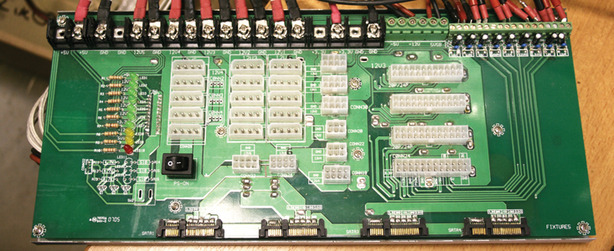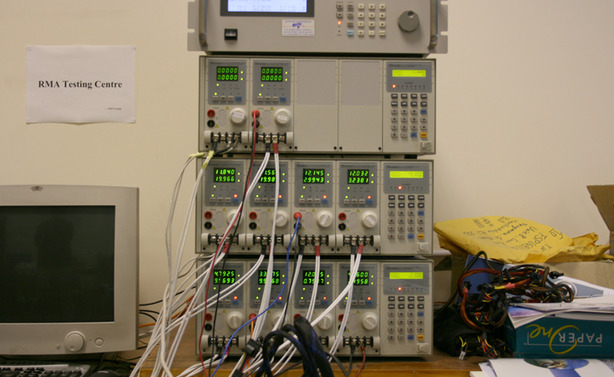PSU Group Test: 500W, 600W, 700W, 850W
September 14, 2009 | 08:58

How We Tested
As PSU test equipment is highly specialised, we use a third-party lab – the UK branch office of FSP – to conduct our tests. This enables us to use the latest generation of PSU testing equipment. By using the combination of a Chroma 6314 load tester and Chroma 61604 power supply, we were able to measure the voltage stability, overall efficiency and PFC efficiency of each PSU.To test each PSU, we programmed the load testers to drain the amount of power that each manufacturer claims its PSU can deliver. We measured the voltage of each rail at 50 and 100 per cent load to determine if it was within the ATX spec. We then left each PSU running at 100 per cent load for 30 minutes to determine whether it could produce stable voltages over an extended period.
Let’s take the FSP Epsilon 85PLUS 600W as an example. FSP claims that it can output 30A on the 3.3V rail and 30A on the 5V rail, but together these rails can output no more than 140W. It also has four 12V rails, each rated at 18A, with a maximum combined output of 48A, a 0.8A -12V rail and 3A 5VSB rail. This meant we had to carry out 32 individual measurements to find out if it meets the ATX spec. As the test results clearly show, the PSU’s 12V rails struggled to output their full claimed 48A, and their output dropped below the 11.4V minimum requirement of the ATX specification on two occasions (highlighted in red).

An area of increasing interest is the overall efficiency of the PSU, or how much power it draws from the mains to supply the requested load. Efficiency is very important because any wasted energy is dissipated as heat. This must then be expelled by the cooling system, otherwise the electronic components inside the PSU will become less effective and the PSU might even burn out. For example, many PSUs can only provide their claimed output at temperatures between 25ºC and 40ºC; if they become any hotter, their output drops.
This means that a less efficient PSU requires a more powerful and noisy cooling system. An efficient PSU, on the other hand, will run cooler and draw less power from the mains, which will help to reduce your electricity bill. The ATX spec cites that at full load a PSU should be at least 70 per cent efficient. As you can see from the Test Sheet, the FSP Epsilon 85PLUS 600W is very efficient, with an average efficiency of 88 per cent at full load, which means it draws 680W from the mains to produce 600W. However, it is slightly less efficient at 50 per cent load, with an efficiency of 85 per cent.

It’s also important to test the efficiency of a PSU’s Power Factor Correction (PFC) circuitry. The PFC helps to reduce uneven harmonics in the incoming current, which in turn helps to reduce the PSU’s power consumption. We measured the PFC efficiency during each of the load tests, and the results for the FSP Epsilon 85PLUS 600W are shown in the Test Sheet.

MSI MPG Velox 100R Chassis Review
October 14 2021 | 15:04








Want to comment? Please log in.